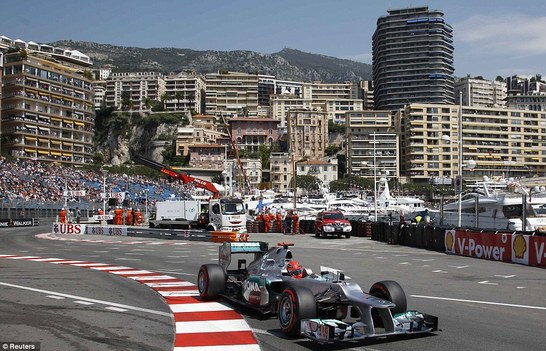The release of the draft calendar for the 2014 F1 championship last month brought with it a number of surprises. The appearance of the Mexican GP for the first time since 1992 was a shock but makes sense since Carlos Slim’s (the former world’s richest man) Telmex corporation has become increasingly associated through sponsorship involvement in the sport and provides personal funding to Sergio Perez, a driver with championship contenders McLaren. Perhaps the biggest bombshell was the omission of the much talked about New Jersey GP, a race planned to be held on the streets of Weehawken, West New York. Sadly, organisers could not guarantee the cash in time to secure a place on the world championship tour. With countries such as Thailand and South Africa queuing up to host a round of the F1 championship and the calendar now growing to a record 21 races in 2014, just what is the attraction of staging an event?
Hosting a race is certainly not cheap nor arguably is it value for money. The Adelaide GP (a circuit not on the calendar since 1995) made a profit once - a euro equivalent figure of around €28,500 back in 1994. Figures available from Formula Money highlight that in 2012 the Australian GP’s running costs reached €69.6 million. This sum is likely to increase as it’s predicted that F1 revenues will more than double to €3.5 billion by 2016. For a sport with a global television audience of over 515 million unique viewers per race and a turnover of €1.15 billion from just the teams, drivers, on-site sponsorship, TV broadcasts and paddock club revenues, how is it that the F1 circus drains finances from 20 of the world’s most glamorous locations and still manages to have venues lining up to get on the merry go
round?
proposition to have a route which encompasses the delights of a cityscape together with national landmarks and tourist hotspots. An F1 streetrace, with 22 bespoke high speed toys whizzing through, seems to be an ideal advertising opportunity. However with disruption to major traffic arteries for up to 4 weeks prior to the chequered flag falling the cost of hosting a round has consequences beyond the local taxpayer’s funds. It also costs a region significantly more money to host a race on a temporary street facility than it does on a permanent circuit.
The next round on the 2013 calendar takes place in Singapore which, since its inception in 2008, is F1’s only night race. It is run on a postage stamp sized piece of road in Singapore’s business district and takes in the EsplanadeBridge and Fullerton Hotel en route. In return for this high speed tourism advert the city state has to cough up about 90 million US dollars per year and needs to put up with circuit installation processes which often cause major disruption several weeks prior to the event.
 The Singapore GP - The only nightime event!
The Singapore GP - The only nightime event! cost up to well over $80 million by 2018. This means that the total cost of a 10 year contract, just for the
commercial fees, is in the region of $550 million. This figure, combined with a conservative $560 million estimate for operating costs, highlights the high
expense of hosting an event – an event which has 3 hours of track broadcasting time on the Friday, 1.75 hours for practice 3 and qualifying on the Saturday and 2 hours maximum for the main event on the Sunday. So for the 4,050 or so minutes of track time over those 10 years the government of Singapore will have splashed out a ball park (or race track) figure of about $274,075 per minute.
One wonders if Bernie has agreed to chip in for the petrol.
Ed Valentine has worked for Honda Formula One. He is a former student of Univeristy College Cork and graduated with a BComm (European) Degree in 2010.

 RSS Feed
RSS Feed